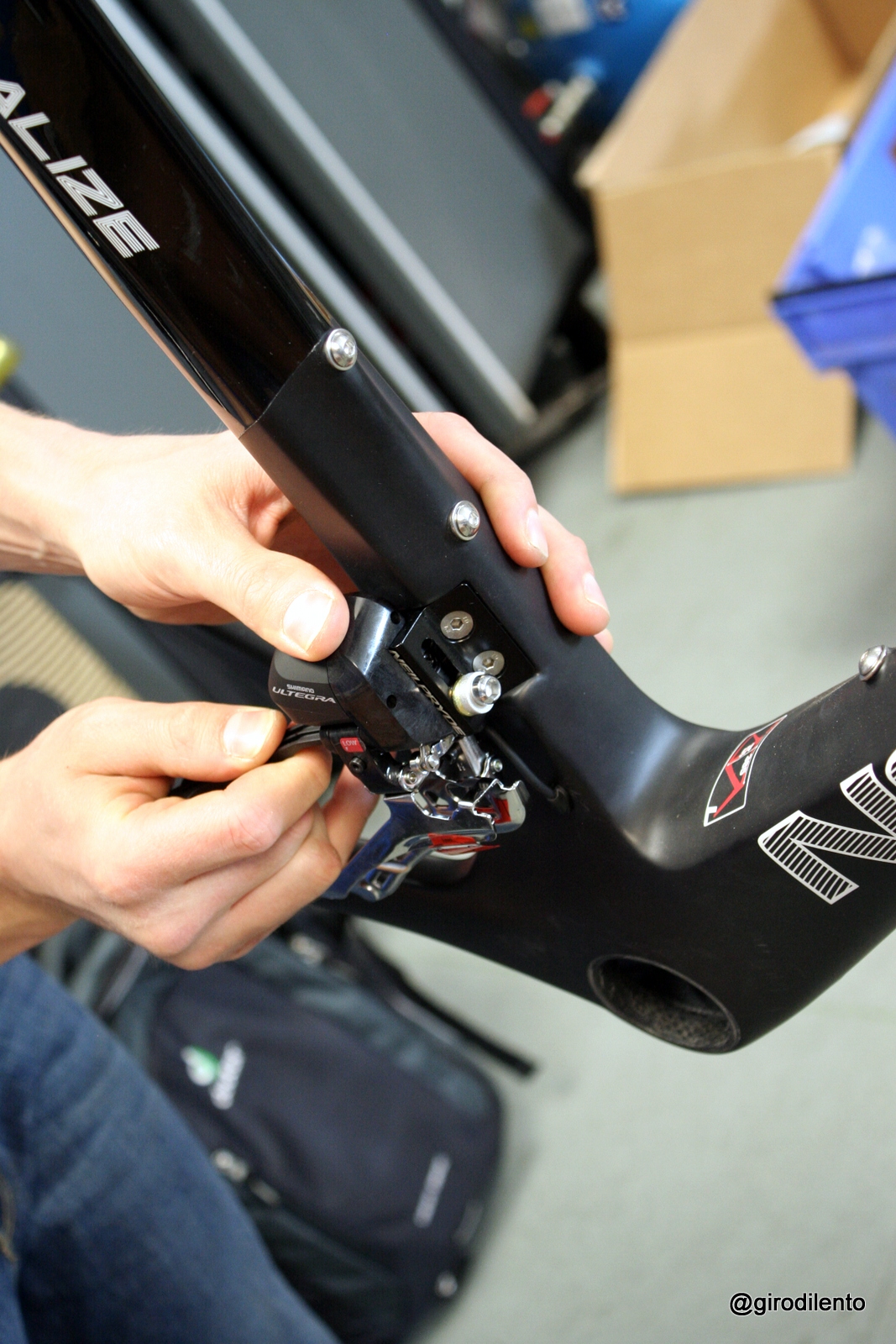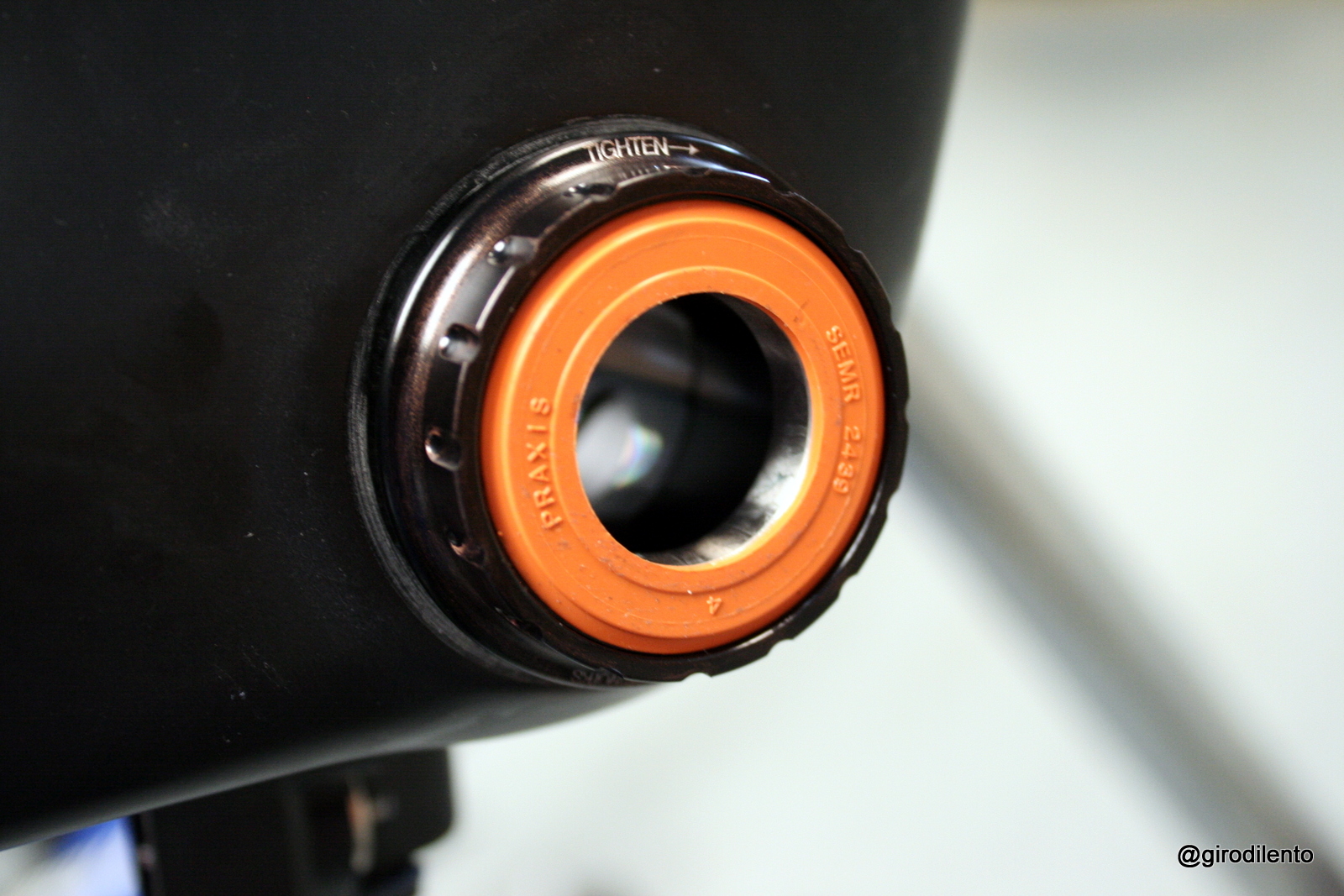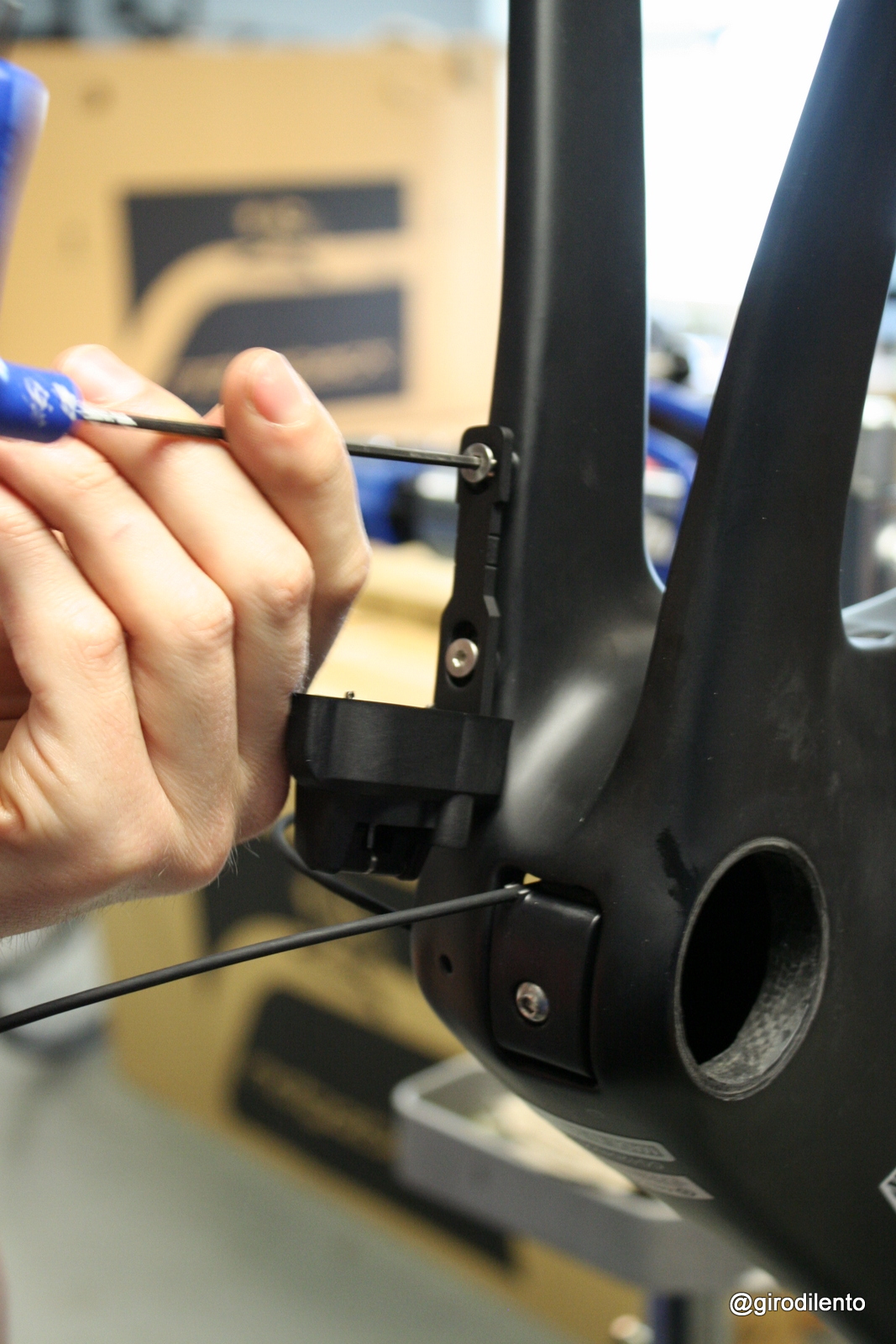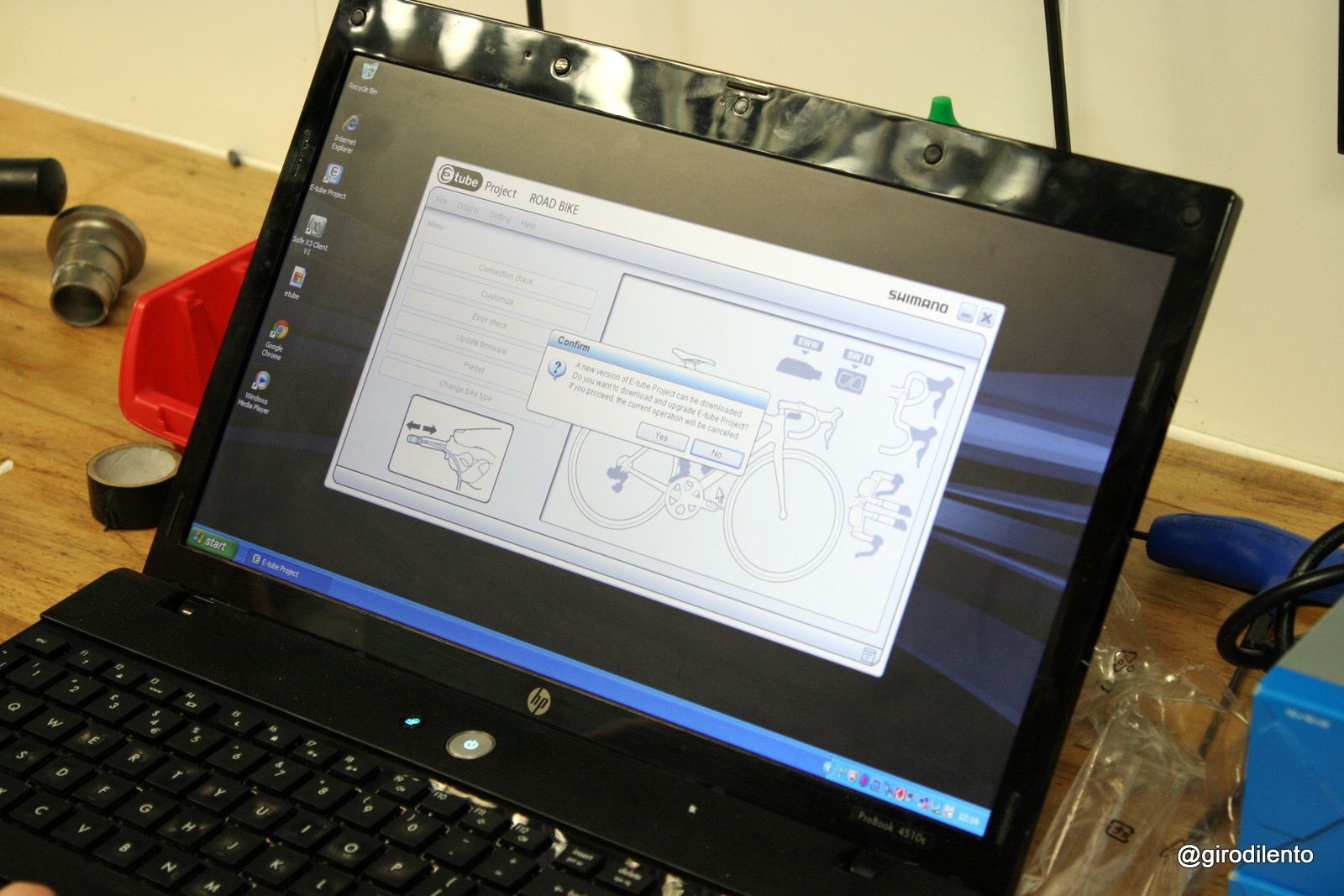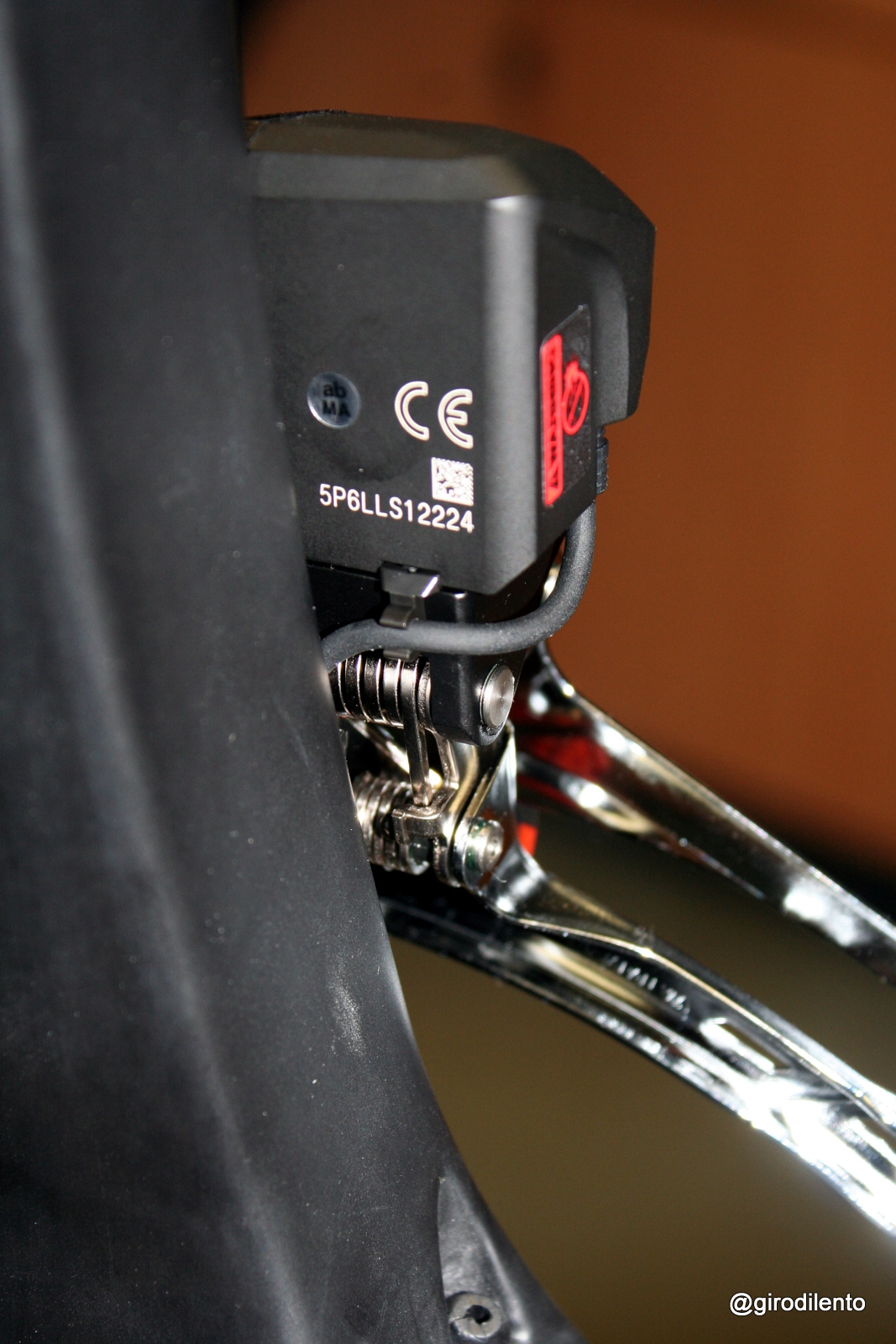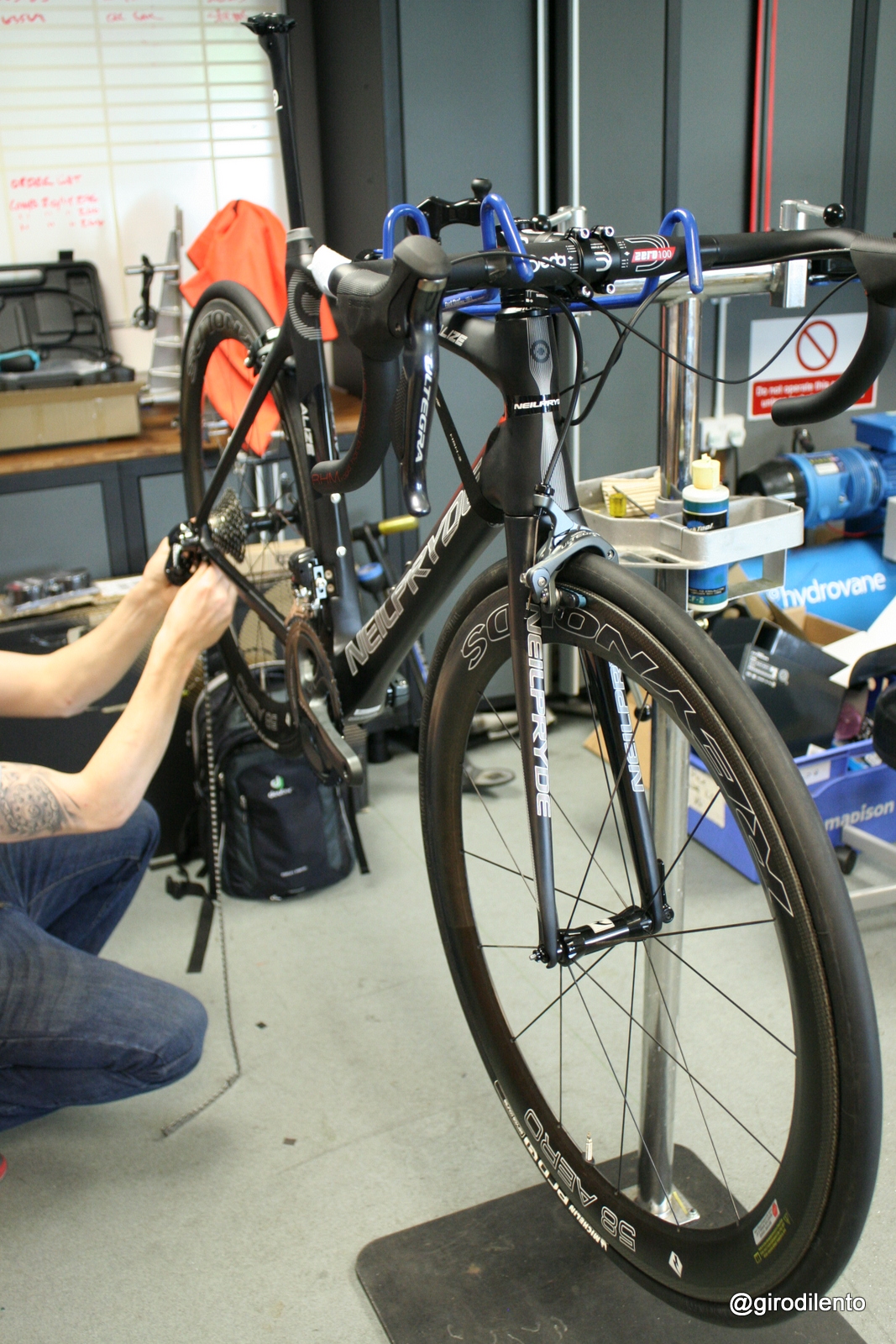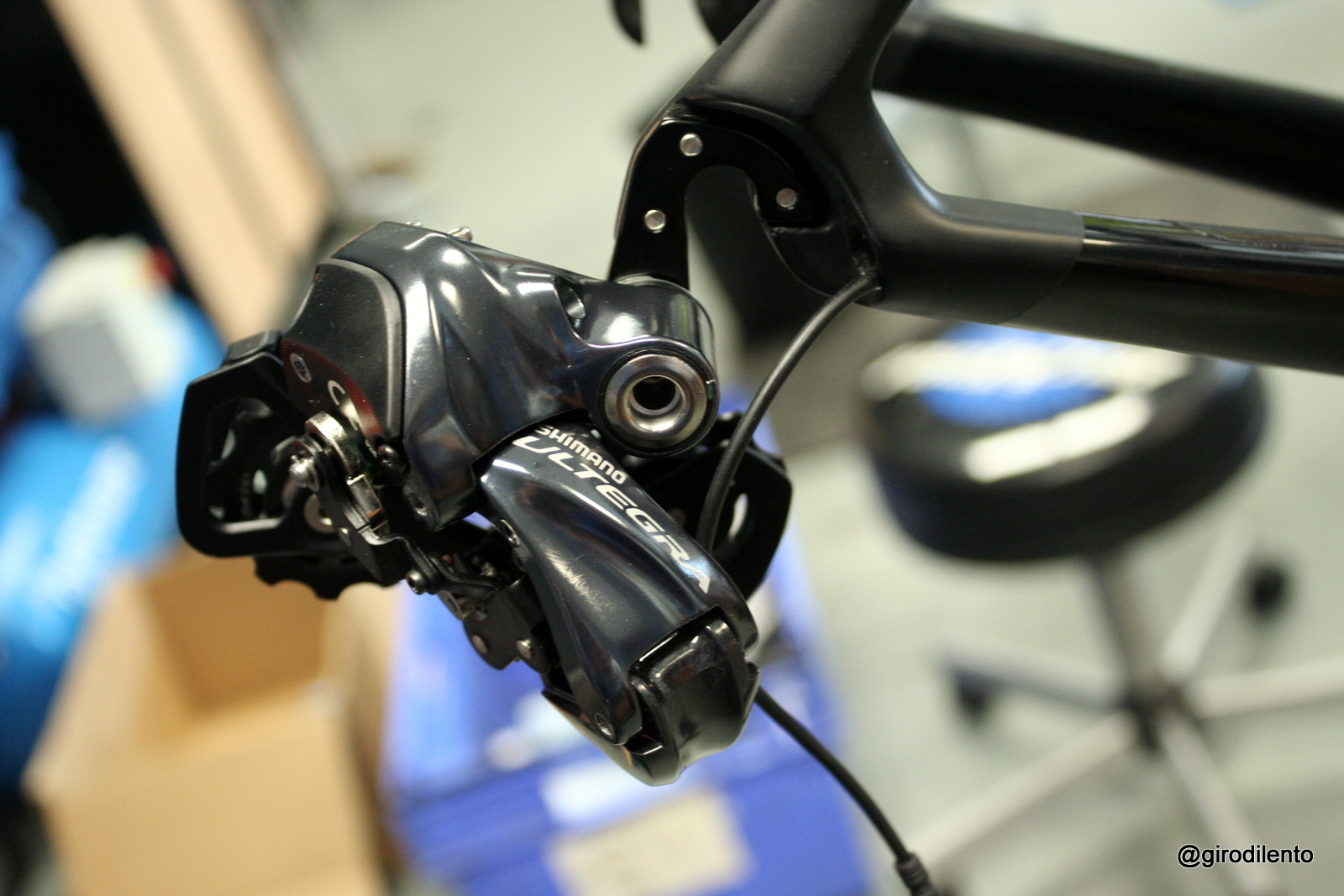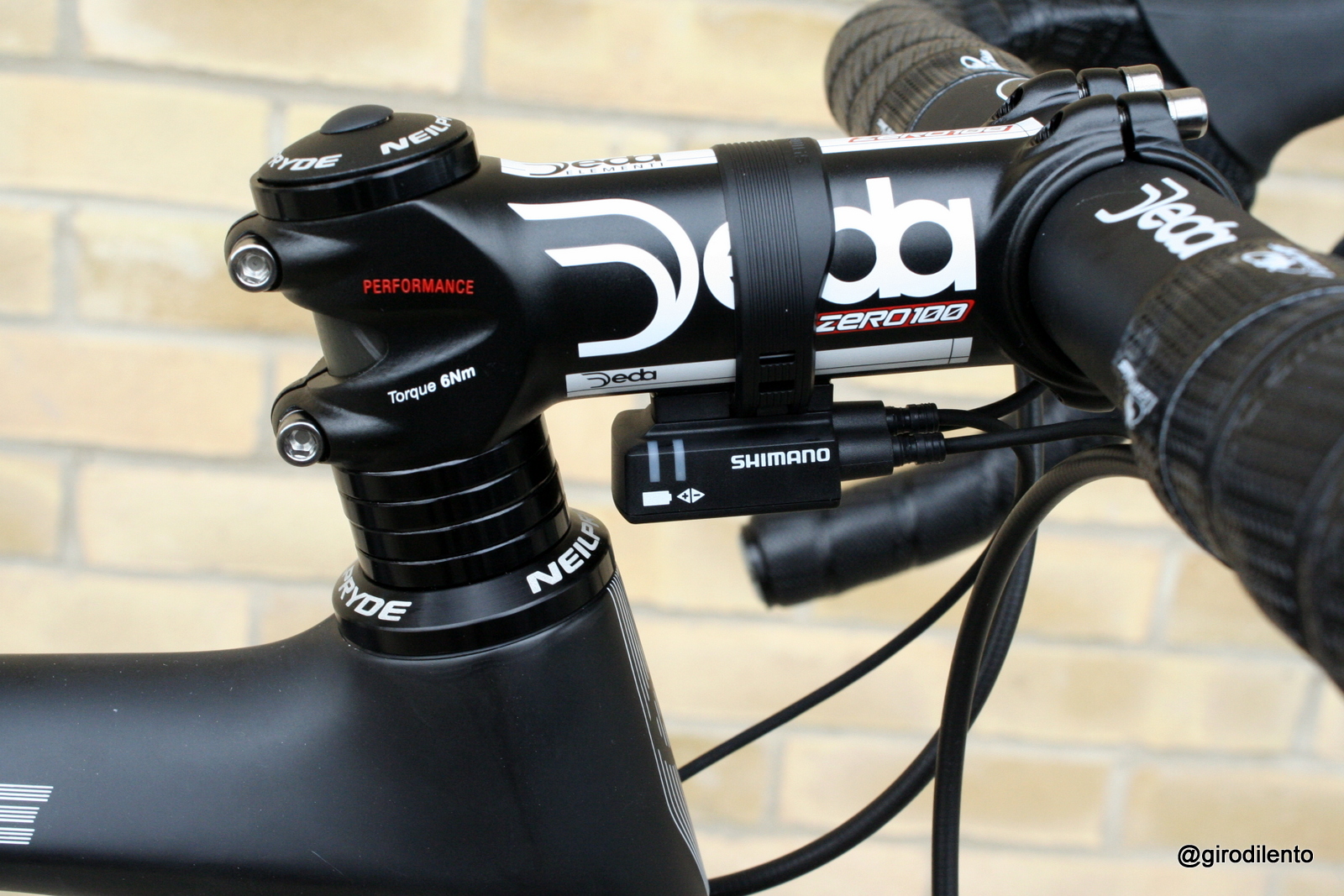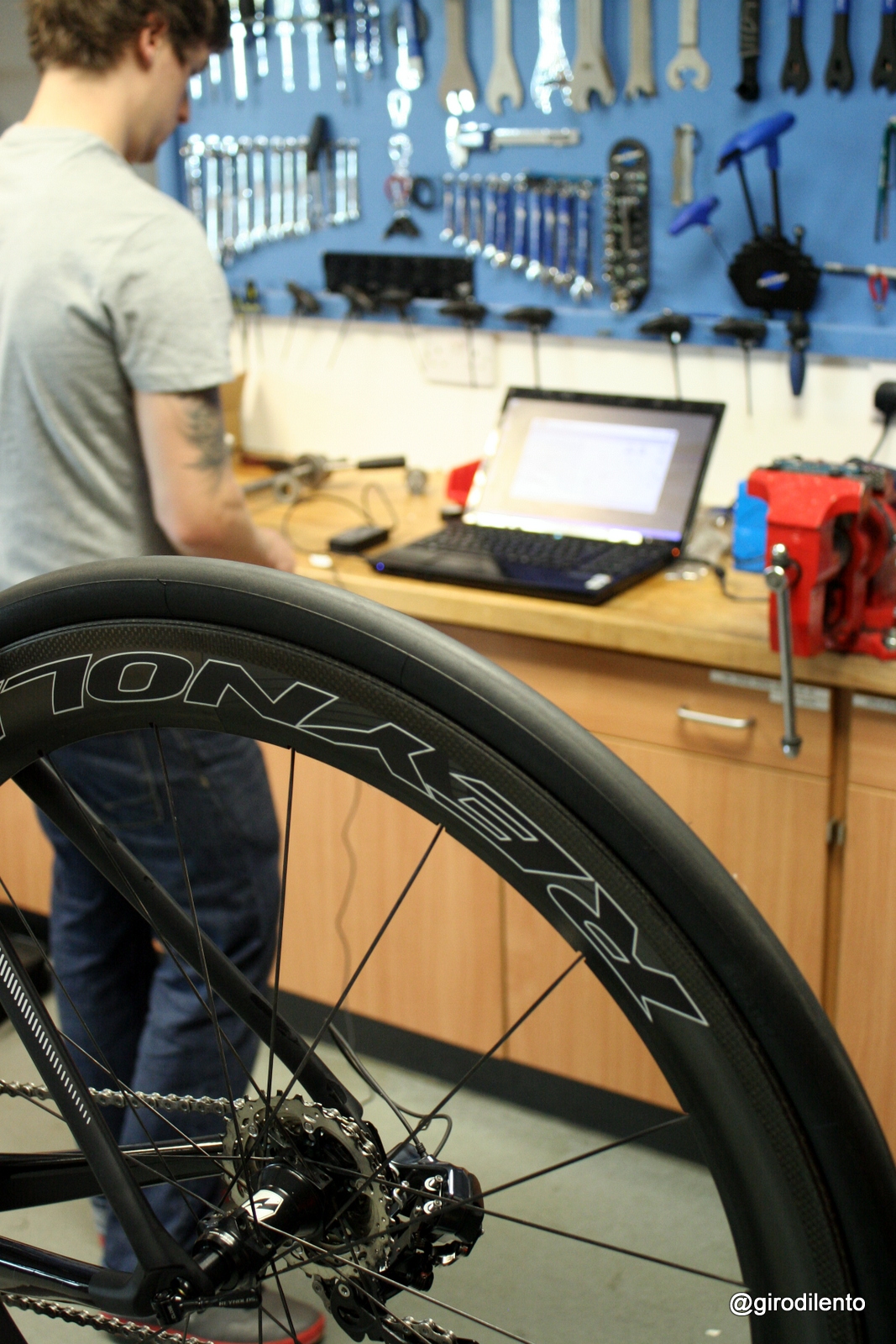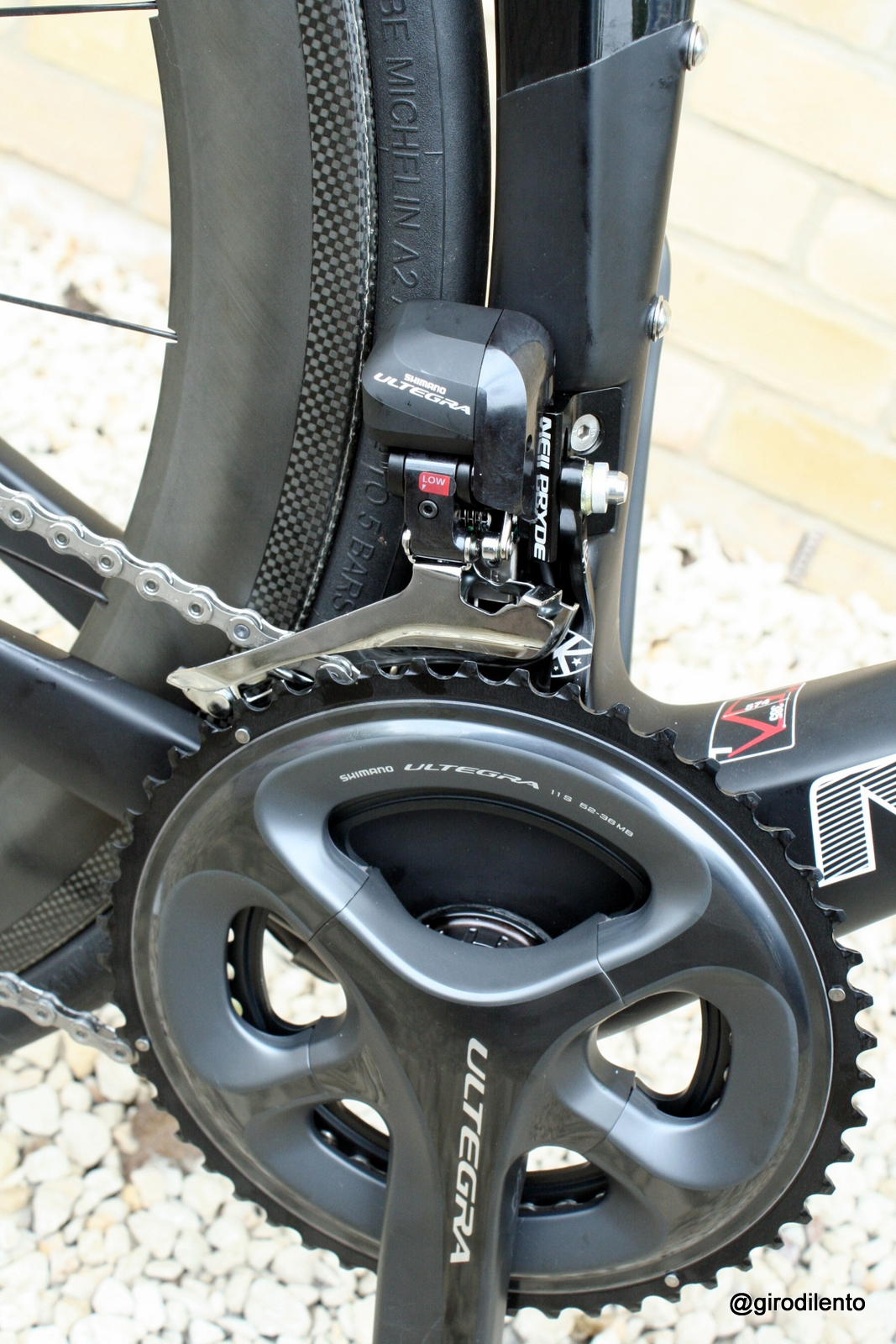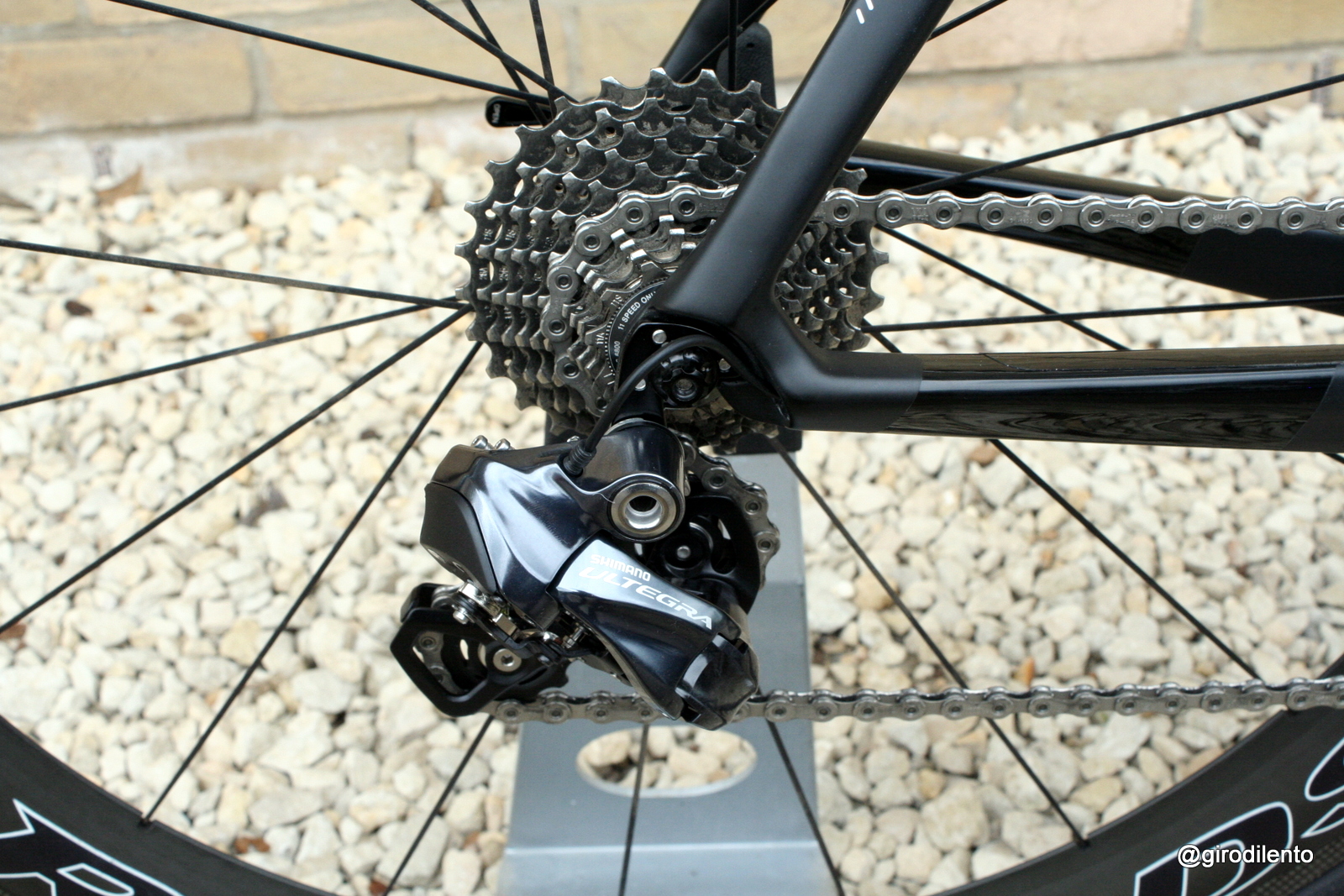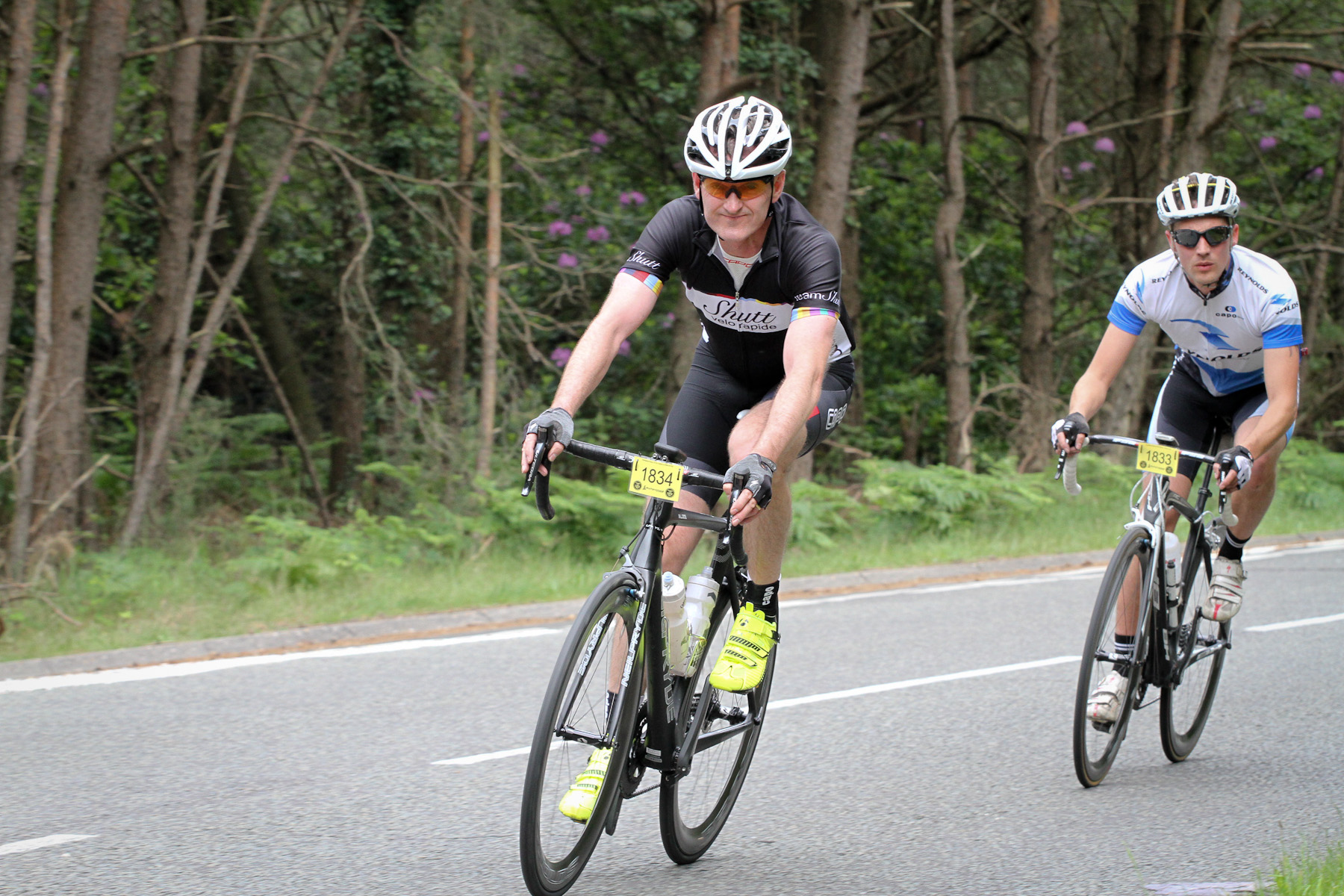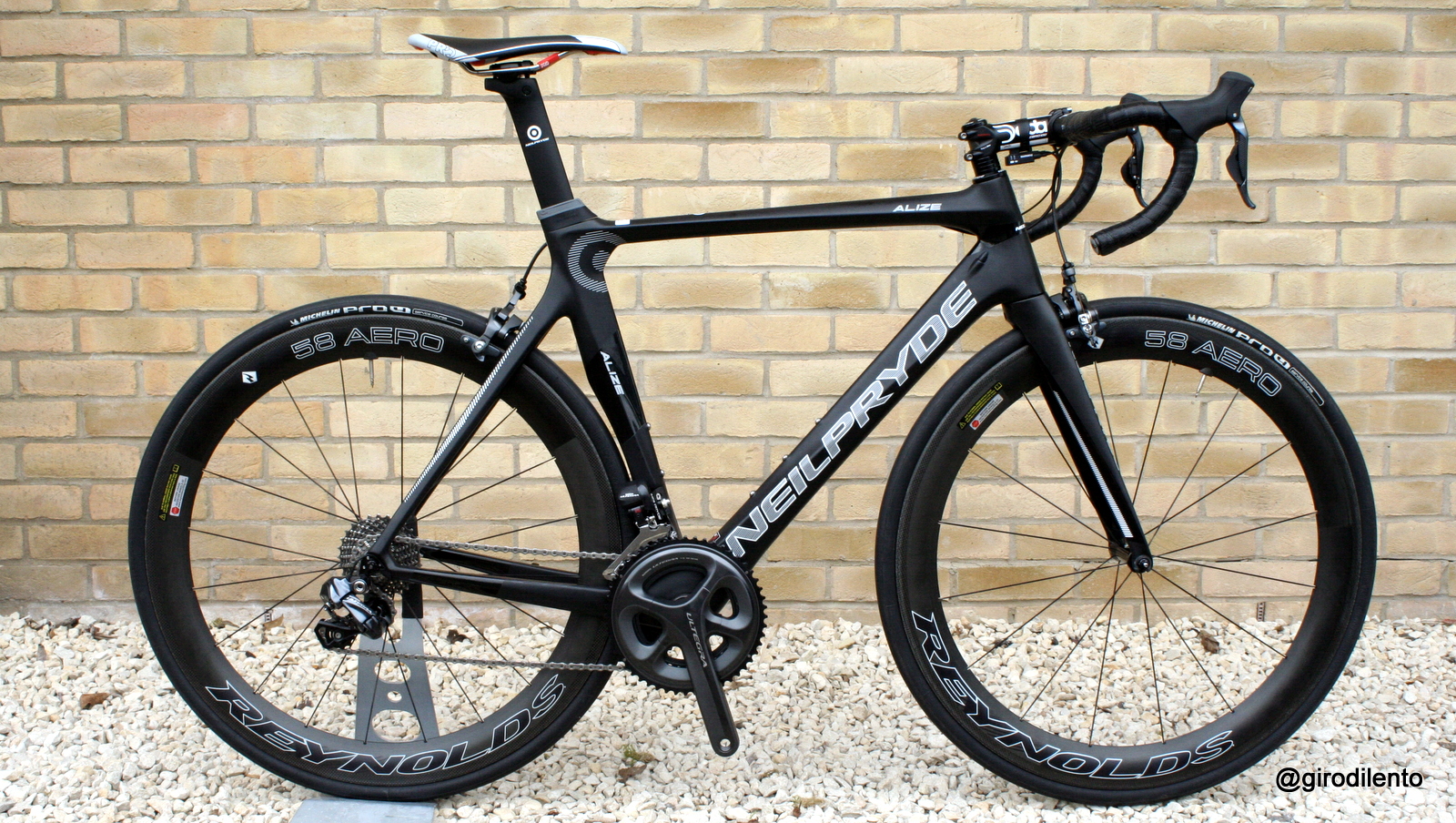I’ve been fascinated by the idea of Di2 from the start and have watched it with interest. However other than a short go on a Shimano Dura Ace 9070 bike on a turbo trainer, I’ve never ridden it.
When I built up my new NeilPryde Nazare/Alize test bike recently, it seemed like the perfect moment to make the leap to Di2. After some conversations with a few people including the good folks at Madison, I had bought myself a Di2 groupset.
I thought it might be interesting for people to see a little about how Di2 is installed and setup, so I took my camera for the build and took some notes to share with you. I’m no mechanic so my observations are pretty general rather than an instructional guide.
The first thing done was to run the connecting cables for the gear shifting through the downtube from the stem to the bottom bracket where on my frameset the internal junction box runs. Then the wires from the junction box to the front and rear mechs were installed as was the one for my external battery under the non drive side chainstay. In fact choosing the cables to connect the mechs and battery are really the only “tricky” part of deciding what you need to order. You need a cable from the each shifter to the junction box under the stem. You then need a cable to run from the top junction box to the bottom bracket junction box. Then cables from the bottom bracket junction to the battery and the mechs. Shimano sell the cables in a range of lengths, so it’s a matter of getting your tape measure out and working out what lengths you need to connect everything together.
Installing a lot of the components is exactly the same as a mechanical build – the brakes and brake cables, the cranks and bottom bracket (I went for a Praxis Works conversion bottom bracket to run my Ultegra crank in a PF30 frame).
Also the chain and cassette and even the rear mech mounts the same way as a mechanical one. The front mech is slightly different as there is also a bracing plate and bolt to stop the mech twisting under the significant torque the motor generates shifting between the front rings.
Once everything is installed on the bike, it was connected to a laptop to ensure that all of the electronic components each had the latest firmware. It is possible that if they don’t due to different timings of manufacture that they won’t work right away – checking and updating the firmware makes sure they’re all using the same software version. The laptop interface also gives you the opportunity to adjust how the levers work in terms of speed of shift or which buttons shift which gears. I left everything as standard except increased the speed of the shifts. Once the software was all up to date, Jack from Madison then set up the gear shifting.
Setting up the front mech was done with both front and rear on the inside cogs (so small ring at the front and biggest cog at the back). A Di2 mech over shifts and then trims back when it goes up onto the big ring, so setting the limits correctly is key. Once this has been done properly – it should just shift perfectly on an ongoing basis and does on my bike.
With the rear mech, again setting the limit screws is the first thing to do and once this is good, the shifting itself is adjusted. To do this you move rear cassette into the 6th of 11 gears (i.e. the middle gear) and enter the adjustment mode using the junction box at the stem. This is then your digital barrel adjuster that has 12 micro adjustment points in each direction from the middle – so 25 points of adjustment.
Pressing the gear shifters adjusts the gear shift position either up or down a fraction allowing you to really fine tune the shifting. Once that bits sorted – it’s done. It’s a simple but clever design and I think 25 points of adjust for the digital barrel adjuster seems amazingly precise.
Obviously one of the great things about Di2 is no cable stretch – so the gear shifting should stay bang on. I’ve done around 350km now and it’s still perfect. Fast, easy, silent and with a fantastic trimming noise from the front mech as you move across the cassette.
One piece of advice/warning I was given was that because of the power of the motors front and rear – NEVER press the gear shift button when you’re not riding as the motors are strong enough to bend the rear mech hanger or bend the front mech. So good practice is to remove the battery whenever you’re not riding it – if someone either accidentally or pushes a shift button or purpose it can do damage to your bike. The same goes for if you’re travelling somewhere in the car – if you go over a bump and your shift lever clicks on a gear – that can be a problem – so disconnect the battery. It’ll save you anguish, potentially cost and keep your gear shifting perfect.
Of course you have to then remember where you put your battery! I haven’t lost mine yet (nearly but not quite).
Charging the battery took about an hour the first time. Charges should last up to 600km. I took my battery out after about 250km to charge it just in case and it took less than 30minutes to charge. It’s really not something to worry too much about. Obviously the more you change gear, the faster the battery will run down – bot you’ve got hundreds if not thousands of gear shifts per battery charge.
Di2 Riding impressions:
Out on the road so far it’s been a joy to use. It’s not pefect – nothing is but it’s very nice indeed. Your are literally just pressing a button to shift. There is some feedback through the button but that’s the bit that’s not quite perfect for me – unless you press the button just enough it doesn’t always shift and I’ve missed a few shifts as a result. If you’re resting your finger on the shift lever hitting a bump can mean you accidentally change gear – but in fairness that’s a problem I have with my Campagnolo Chorus shifters too. Maybe my lever’s are a touch off but if you click more firmly it works perfectly every time. In the fast shift mode I’m using – the shifts are very quick – and perfect performed. The system trims itself as you move across the cassette meaning all 22 gears are perfectly usable – it also makes a cool noise as it trims which you and your riding companions will audibly hear! The front shift is impressive too and is fine under load – although I always try to lift off a bit shifting up on any bike I ride.
Having the gear shifting working so well also helps my bike run very quietly. Often riding with others when you get to a climb and people start lots of gear shifting to get to the right gear it can be quite noisy as chains clatter across cassettes but there’s none of that with Di2 – no clatter just smooth fast shifting. If you like a quiet bike – Di2 is the best thing I’ve found other than riding a steel bike for a quietness.
So apart from a few tiny niggles around the operation of the shift levers, I’m very, very impressed with Di2. Yes it’s not particularly cheap at roughly the same street price of Dura Ace 9000 mechanical but I suspect it’ll be both cheap to run (due to shifting better and looking after the chain cassette accordingly) and very reliable. This is the 4th generation of Shimano Di2 now, so it should be as reliable as any other high quality Japanese engineering!
It feels like a bit of an extravagance compared to say mechanical Ultegra 6800 which is really good too – but sometimes it’s nice to be able to have a treat and this one certainly is very cool as well as working beautifully. There are more bikes out there now with Di2, so it’s not perhaps the novelty it was say 12 months ago – but Di2 bikes still aren’t exactly everywhere.
My plan is for this to be a long term test, so I’ll keep riding it though the year and report in on any further findings. If you have any questions, please let me know. Thanks for reading.
If you’ve found this post useful, please consider subscribing to girodilento premium today to help us produce more great content. Subscribers also get access to our pro cycling coverage, premium interviews and the ability to give suggestions for future posts.
You can subscribe now by clicking on the green button below:
[mepr-membership-registration-form id=”20566″]



